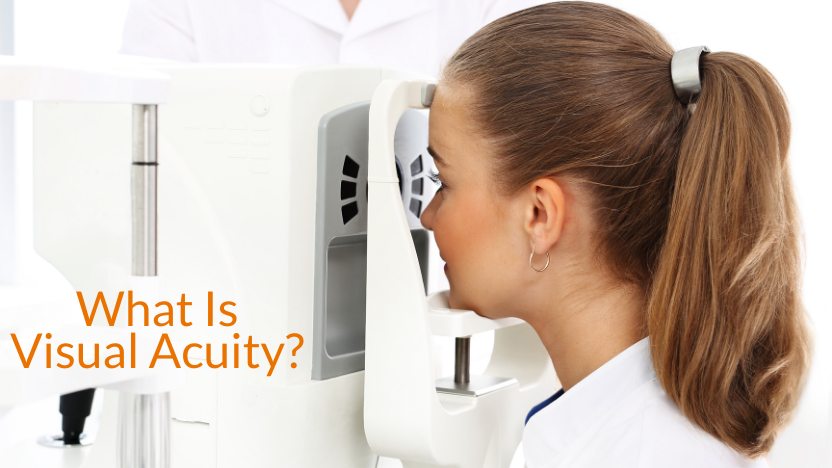Do You Know What Visual Acuity Is?
Posted by EyePromise on Aug 19th 2021
Vision is a multifaceted sense with many different factors adding up to great sight. Perhaps the most recognizable of those is visual acuity. If you don’t recognize the name right off the bat, stick around as we discuss what it is and its importance to overall vision.

What Is Visual Acuity?
Visual acuity is a measurement of how well your eyes can see small details. Eye charts measure visual acuity, and it’s what is referred to when people say they have “20/20 vision.” This is a quantity measurement, not a quality measurement, and it’s usually set up with a best-case scenario environment. We say it’s “best-case scenario” because the eye chart is black text on a white background (the highest contrast), and it’s usually performed in a well-lit room for maximum visual performance.
How Does an Eye Chart Work?
A standard eye chart determines your visual acuity by taking a standard 20-foot distance and asking testers to identify the letters on a certain line of the chart at that distance. The eye care professional then compares the ability of the tester to what “normal” vision can detect, hence the standard “20/20 vision.”

Why Does Visual Acuity Matter
Visual acuity is how well you see details at certain distances. Poor visual acuity means that navigating life becomes difficult. Objects at a distance are blurry and hard to focus on, causing your eyes to strain, and small print become more difficult to read. Some people don’t even realize they have poor visual acuity until they get the problem fixed. They believe that everyone’s field of view is blurry and undistinguished. Additionally, visual acuity tends to diminish over the years. That’s why annual eye exams are so important!
How Do I Improve My Visual Acuity?
Many of you probably know the answer to this question. Corrective lenses are the most common way to improve one’s visual acuity. Eye care professionals use your visual acuity to determine your prescription, then you get to pick out frames to house your new prescription lenses. Another tool for correcting visual acuity is contact lenses. Just like glasses, doctors use your score to determine your prescription and order specialized contacts to help you see “normal.”
Nutrition
While glasses and contacts are well-known options for improving visual acuity, there’s another way to improve visual acuity. Improving nutritional intake can actually have an impact on your acuity score. Specifically, increasing intake of an antioxidant called zeaxanthin can improve your visual acuity by 1.5 lines on an eye chart! That’s a huge improvement! However, this jump in vision is only possible with 8 or more milligrams of this potent nutrient.

Zeaxanthin can be found in brightly colored vegetables and leafy greens, but it’s difficult to eat the amount of zeaxanthin needed for visual improvements. That’s why many eye doctors recommend supplementation to help bridge the dietary gap. The #1 eye doctor recommended vitamin brand is EyePromise®. It’s the only line of supplements with at least 8 mg of dietary zeaxanthin for the biggest impact on vision.
When it comes to vision, visual acuity is the first thing on everyone’s mind. We want to be able to see clearly at a distance and easily distinguish small details. Visual acuity improves with corrective glasses or contacts, but it can also be improved with supplementation. Find out which EyePromise vitamin is right for you by taking our product selector quiz, and schedule your eye exam today!

